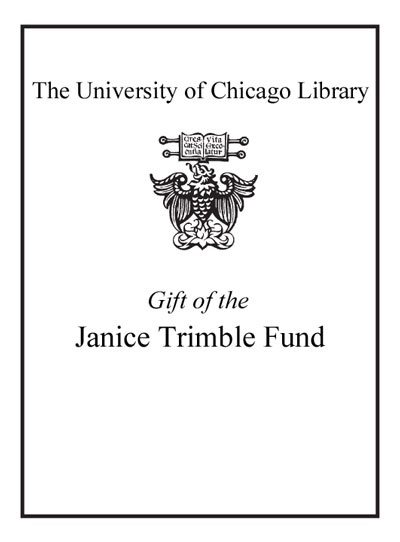The social life of criticism : gender, critical writing, and the politics of belonging /
Saved in:
| Author / Creator: | Stern, Kimberly Jo, 1977- author. |
|---|---|
| Imprint: | Ann Arbor : University of Michigan Press, [2016] |
| Description: | viii, 240 pages ; 24 cm |
| Language: | English |
| Subject: | |
| Format: | Print Book |
| URL for this record: | http://pi.lib.uchicago.edu/1001/cat/bib/10921519 |
Table of Contents:
- 1. Reimagined Communities: An Introduction
- 2. The Critic as Clubman: Origins of the Social Life of Criticism
- Virtual Networking: Periodical Clubs and the Public Sphere
- Gendering Discourse: Collectivity and Female Judgment
- Tattling on Tradition: The Cases of Jenny Distaff and Mrs. Crackenthorpe
- A Network of Spies: The Female Spectator
- 3. The Critic as Interlocutor: Anna Jameson and the Politics of Dialogue
- The Round Table: Male Collectivity and the Nineteenth-Century Critic
- Scripting Gender: Critical Discourse and the Politics of Gallantry
- Solitary Confinement: Anna Jameson and the Sentimental Woman Writer
- Opening a Dialogue: Female Critics in Conversation
- 4. The Critic as Sociologist: Sociable Dissent in the Work of George Eliot
- Laws of Progress: The Sociological Foundations of the Westminster Review
- A Common Fund: The Female Salon and Critical Collectivity
- A Fellowship in High Knowledge: Dororhea Brooke as Female Critic
- The Critic in Exile: Impressions of Theophrastus Such
- 5. Critics without Borders: The Andsocial Criticism of Eliza Lynn Linton and Vernon Lee
- Tootles and Screeds: The Problem of Classification
- The Shrieking Sisterhood: Eliza Lynn Linton and the Limits of Community
- A First-Rate Fellow: The Case of Jane Osborne
- An Antisocial Tirade: Vernon Lee's Althea
- Epilogue: A Society of Outsiders: Feminist Criticism and Collectivity after the Nineteenth Century
- Notes
- Bibliography
- Index

